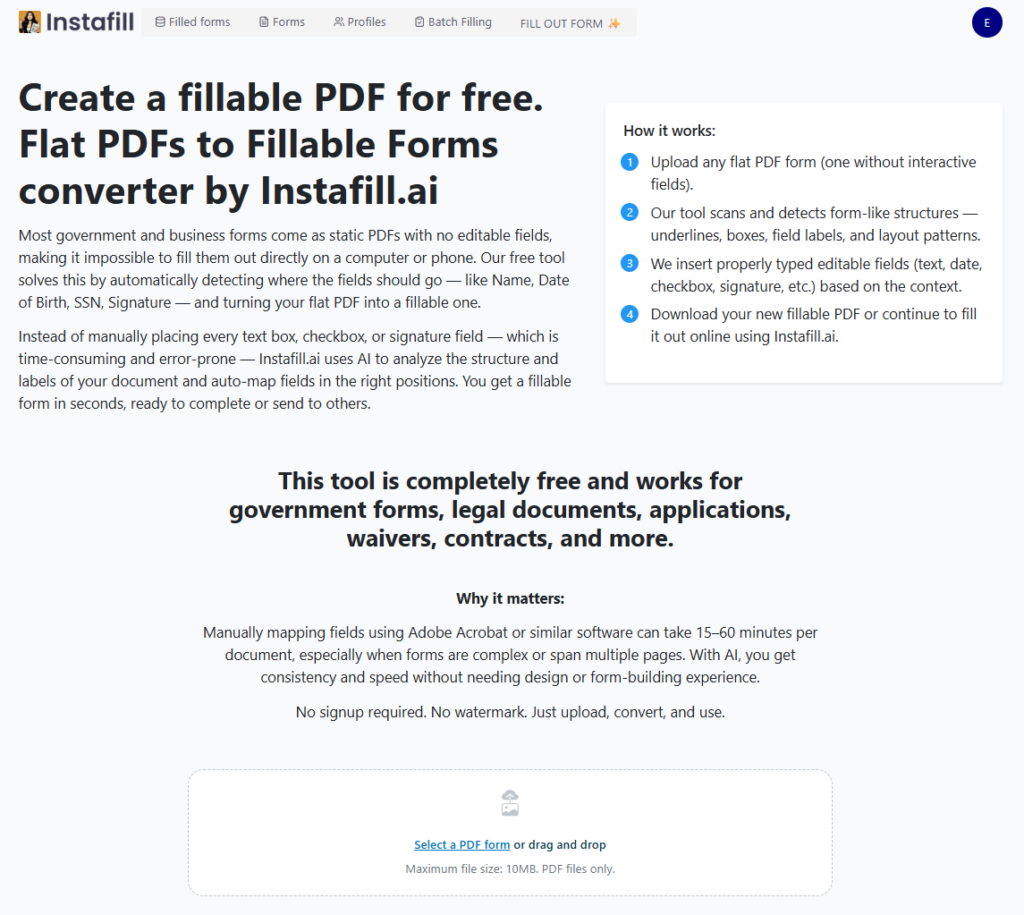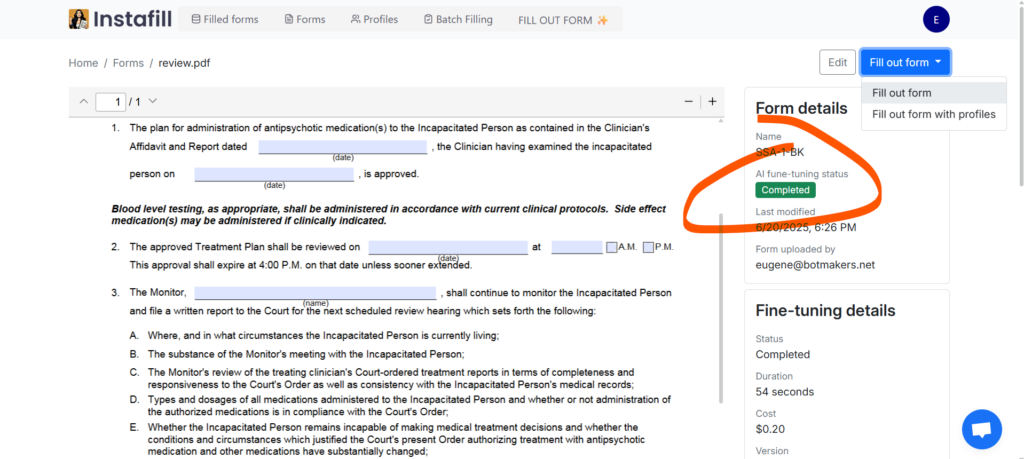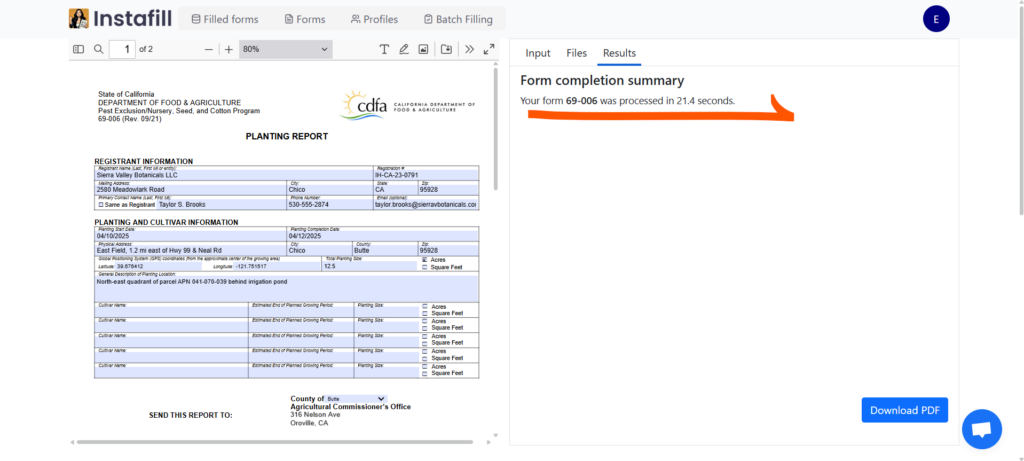If you’ve ever filled out a long PDF form by hand — copying names, addresses, dates, retyping the same employer info again and again — you know it’s a time sink. The more pages, the more likely you are to miss something.
Instafill.ai is built to automate that entire process. It doesn’t just speed things up — it fills forms better, with fewer errors, and adapts to real-world data that’s messy, inconsistent, and spread across emails, spreadsheets, and attachments.
Let’s walk through how it works and what problems each part solves.
1. Upload a Fillable PDF Form
What You Need
Instafill works best with fillable PDFs — these are forms that have actual input fields built in (like name boxes, checkboxes, date pickers). They let the AI identify where to place information precisely.
But many people only have scanned documents or flat templates, where nothing is editable. Before AI, turning a scanned PDF into a usable fillable form required Adobe Acrobat Pro and lots of manual field mapping — dragging out each text box, naming every field by hand.
That’s why Instafill has a tool to automatically create a fillable PDF form from any PDF, image, or Word document into a fillable form.

You upload your static document, and the AI detects where fields should be, what types they are (text, date, checkbox), and creates a fully interactive PDF that’s ready for automation.
Learning the Form
Once a fillable form is uploaded, Instafill checks if it already knows the structure. If not, it runs a one-time analysis.

This step is important because forms aren’t all built the same — some have clear field names, others don’t. The AI studies the form to understand:
- Which fields go together (e.g. employer name + address)
- What label maps to what field
- Where tables or repeated sections are used
This replaces what used to be a manual, hour-long job of building templates and testing them. With Instafill, it runs in the background in 10–20 minutes, and applies across all future uses of the same form.

- Upload multiple forms? Each will be learned automatically.
- Users receive email alerts when learning starts and when it finishes — helpful if you’re processing a large batch and want to walk away.
If a form was already learned earlier, this step is skipped entirely.
2. Fill Out the Form
Now comes the magic: telling Instafill what data to use.
Before this kind of automation, people would manually open a PDF, then jump between a spreadsheet or email to find the right values, copying and pasting them one by one. A 5-page form could take 30–45 minutes, especially if it was filled out for multiple clients.
Instafill changes that. You open the form, click “Fill out the form”, and provide the information once — the AI does the rest.
How You Can Provide Data
- Paste free-form text (e.g. “Name: Sarah Daniels, Phone: 555-123-6789…”)
- Upload documents:
.txtfiles- Word docs (
.docx) - Excel spreadsheets (even with multiple sheets)
- PDFs, including previously filled ones

You can combine both — paste custom values and upload backup files. The system prioritizes free-form text, so you stay in control if there’s conflicting data.

There’s no special formatting required. You don’t need to rearrange your spreadsheet or retype anything. The AI reads it, understands context, and maps it to the form fields automatically.
Speed and Accuracy
For a typical 3–6 page form, filling takes 15–20 seconds.

If your input includes large PDFs or Excel sheets with hundreds of entries, the system may take up to 2 minutes. That extra time allows it to parse, extract, and resolve ambiguities — like choosing the right employer name when multiple are listed.
The result is a fully filled form, with:
- Correct formatting (e.g. date in MM/DD/YYYY)
- No skipped fields
- Clean alignment, even in complex layouts
Need to make a change? Just update the data and rerun the fill.
3. Finalize the Form
Once the form is filled, you’re not locked in. Instafill gives you full control to finalize the document based on what needs to happen next:
- Edit values manually — click on any field and update it directly
- Sign the form with a digital signature
- Draw or annotate — useful for underlining, arrows, or adding instructions
- Flatten the document so fields are no longer editable (required by many agencies)
- Download a ready-to-send PDF
Real-World Example
Before Instafill:
A paralegal receives a 6-page form from a client. They pull data from legal intake notes in Word, copy each value into the form, check formatting, fix layout issues, print, sign, scan, and send. Total time: 45–60 minutes.
With Instafill:
Upload the form once, paste the client data or upload the intake notes, wait 20 seconds, review the filled form, sign, flatten, and download. Total time: 25 seconds — with higher accuracy.
Final Notes
Instafill.ai isn’t built for perfect data or one-size-fits-all forms. It’s made for professionals who deal with:
- Sloppy source files
- Repeated form submissions
- Changing client details
- Strict deadlines and formatting rules
Instead of relying on rigid templates or hand-filling forms, Instafill learns each form’s structure, accepts real-world data in many formats, and fills forms better than a human — while keeping you in control.
Try it yourself:
Start here → Instafill.ai PDF Filler
Automate at scale → PDF Filler API documentation
